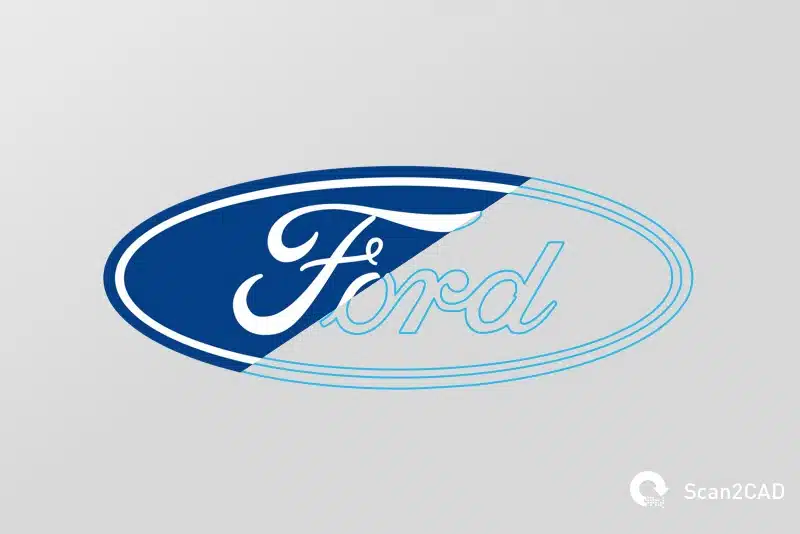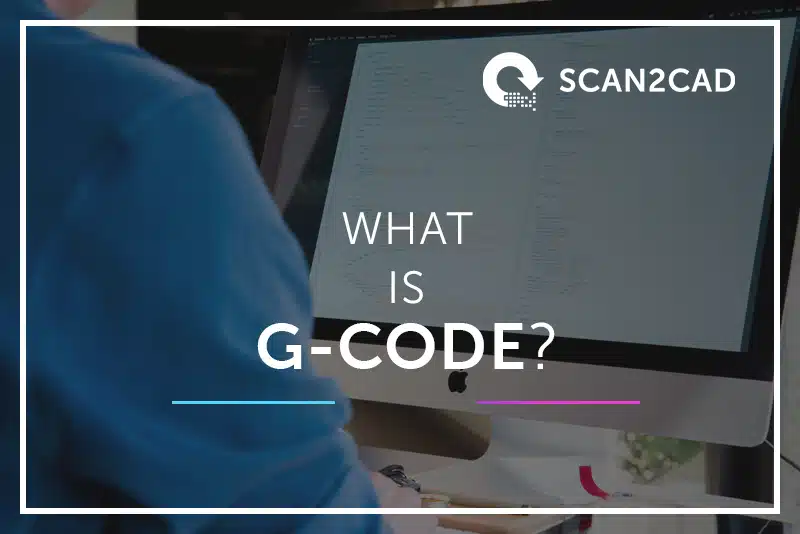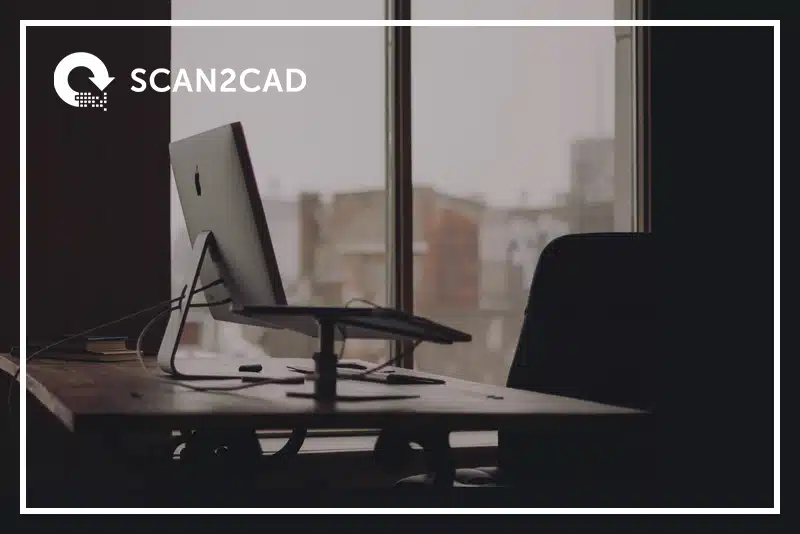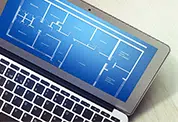CNC allows designers, engineers and hobbyists worldwide to create all kinds of interesting projects. Using CNC tools like milling machines, waterjets and laser cutters, nothing is too far out of reach. With so much to create, you might be wondering how you can go about starting on your next project. How, for example, can you take a JPG and create a wooden sign for your business? It’s simple—all you have to do is convert images to G-Code and off you go!
Our latest Scan2CAD guide will take you through the intricacies of converting images to G-Code. We’ll cover everything from why you may need to do it, to how the process works, to how Scan2CAD can do it all for you at the click of a few buttons!
Table of Contents
Why is conversion necessary?
General purposes: raster versus vector
JPG (and JPEG) is a raster file format which is used predominantly for digital photography. While it’s a common file format (and small in size, which makes it ideal for sharing) it comes with a range of issues that all raster file types suffer from. Rasters are made up entirely of pixels—those tiny squares that become more noticeable when you zoom in or enlarge your JPG. Unfortunately, this means that changing your raster’s scale is difficult and ill-advised. They’re resolution dependent, after all!
In comparison, vector file types like DXF and DWG are mathematically perfect. Used in graphic design, engineering and CAD, vectors don’t lose their quality. Unlike rasters, they’re made up of paths, not pixels. This means that it doesn’t matter how much you zoom in or change the scale: they remain high in quality. As such, you could take the same vector image and use it on both a business card and a billboard.
For CNC: from Images to G-Code
CNC machines like routers or milling machines make use of a series of pre-programmed commands to—in subtractive processes—take material from your piece. The most popular programming language is G-Code, the creation of which marked an important step in the history of CAM. This language controls exactly how your CNC machine’s tools move. From how fast your tools move to the speed of rotation, everything is covered in the G-Code.
You can see why, then, you can’t simply take a JPG and automatically use it with your CNC machine. These machines only work with vector file formats or G-Code. Fortunately, conversion software like Scan2CAD can trace your simple JPG and convert it to a vector file format so you can take your design to fabrication. This vector can then be converted directly to G-Code which can be read by control software and used to run your CNC machine.
What is vectorization?
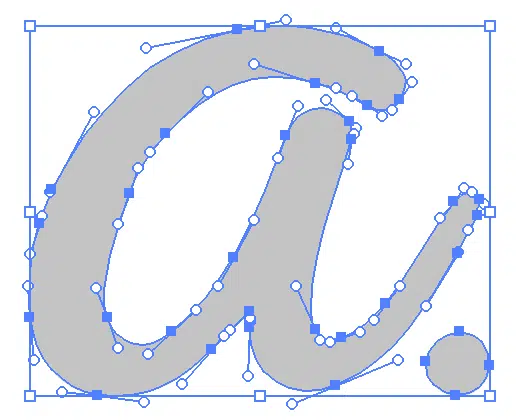 Conversion—or vectorization—involves taking your raster, in this case a JPG (or JPEG), and converting it to a vector. This can be done by either manual tracing or automatically tracing your JPG. We’ll discuss how each process works briefly and help you decide which is best for you.
Conversion—or vectorization—involves taking your raster, in this case a JPG (or JPEG), and converting it to a vector. This can be done by either manual tracing or automatically tracing your JPG. We’ll discuss how each process works briefly and help you decide which is best for you.
Manual tracing
If the name didn’t give you a clue, manual tracing involves tracing—or drawing—over your raster image with vector lines. This can be done with software like Inkscape and Illustrator. If the idea of using your mouse to click and trace over your entire image exhausts you, you might instead opt to use a tablet and graphics pen.
Automatic tracing
As you might have guessed, automatic tracing involves using software—like Scan2CAD—to instantly convert your JPG, for example, to a vector and then G-Code. The way Scan2CAD works is by detecting the lines present in your raster and converting them to vector entities. This can then be converted to G-Code ready for use with your CNC machine.
Which process is better?
One of the main factors to take into consideration is time. Manual tracing is a time-consuming and taxing process. If you’re pressed for time—or you’re anything like us and you’re rushing to start those CNC projects—you might be looking to get your JPG converted ASAP! In this case, automatic tracing is the process to pick. On the other hand, if you’re working with a more complex image, manual tracing might be the better option. Some conversion software can struggle with understanding and recognizing certain raster images.
If you’re still unsure, make up your mind by looking at tracing: manual or automatic.
Avoid online converters
You might think that the easiest thing to do is to search for “convert JPG to G-Code” into your browser and choosing the first result. Unfortunately, as we frequently warn our readers, online converters are extremely temperamental. Some of the many disadvantages include:
- Limited capabilities in converting certain entities
- No conversion for large file sizes
- No batch conversion
- An output that, more often than not, won’t work with CAM
- Problems with converting raster text to vector text
That’s not even mentioning the most obvious disadvantage—the possibility of accidentally downloading a dangerous virus or trojan. In all, you have to ask yourself: is facing the pitfalls of online converters really worth it? If your answer is no—as we hope it is—we can show you how Scan2CAD can convert JPG to G-Code in a few simple steps!
How to Convert Images to G-Code
In the below video, we demonstrate how you can use Scan2CAD to convert any image format to G-code which will be fully compatible with any CNC machine that supports the g-code file format.
Convert JPG to G-Code
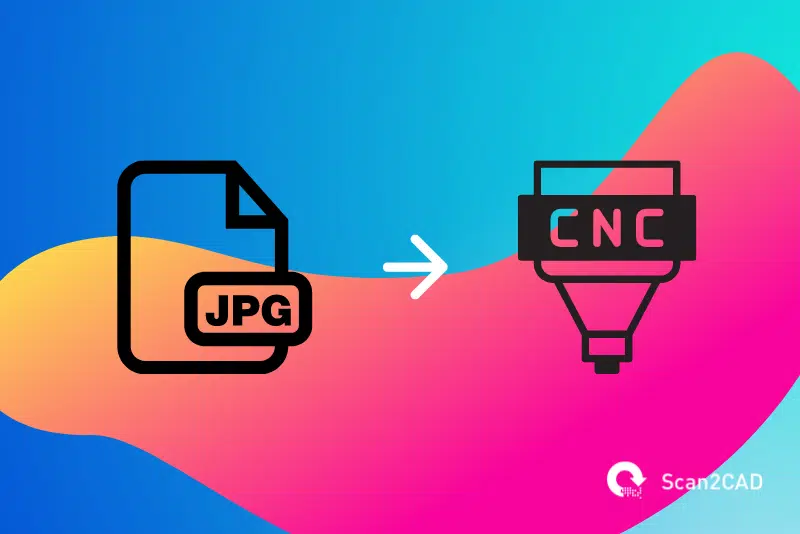
We don’t call Scan2CAD the market-leading raster-to-vector converter for no reason! While its primary focus is the conversion of raster technical drawings to vector images, Scan2CAD can also be used as a vital part of the CNC process and many use it for converting images for CNC purposes. The many ways Scan2CAD has been used include routed signs, metal sculpting and glass reproduction.
Unlike online converters, Scan2CAD makes use of vectorization type settings to give all users a specialized conversion suited to the type of image they’re converting. If you’re converting a JPG for use in CNC, for example, you’d select the “CNC Profile” setting. Scan2CAD, using pre-programmed variables, would then try to reduce the number of lines and node points in your image. Why? The cut paths of your CNC machine relate directly to the number of vector shapes you have. Reducing them, therefore, makes it easier for your machine.
The best part about the entire vectorization process in Scan2CAD is that it takes mere seconds to complete. Once the process is done, you can then skip the entire CAM process and convert your image directly to G-Code!
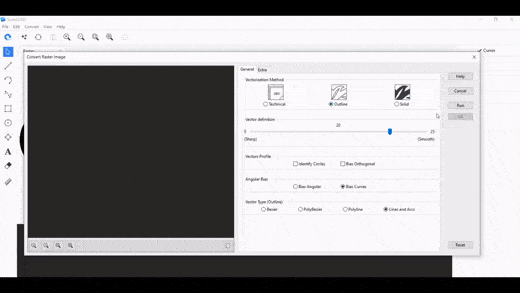
Converting a JPEG image to G-code in Scan2CAD
Convert PNG to G-Code
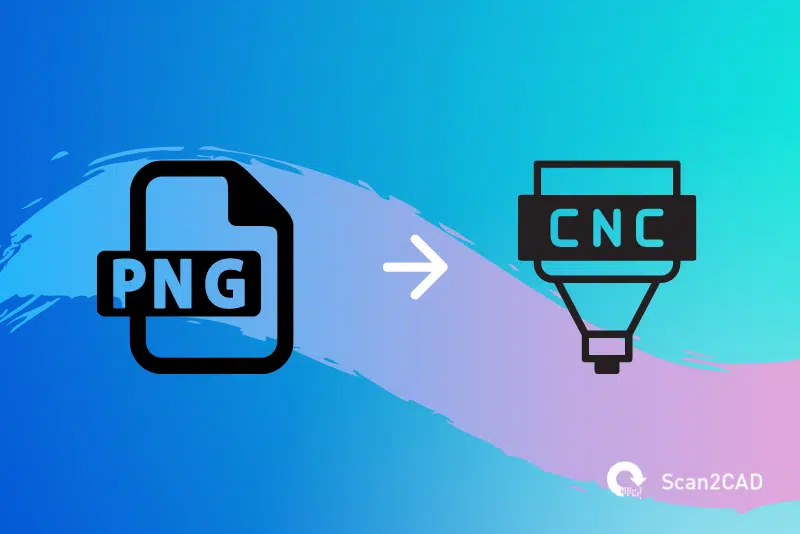
Much like JPG, PNG is another raster image format, formed of pixels. Therefore, the process to convert PNG to G-code requires you first to convert the raster image to vector. Thereafter you will be able to convert the vector file to G-code.
To convert your PNG to G-code, begin by downloading the Scan2CAD free trial. Next, open the PNG image you wish to convert in Scan2CAD and follow the same steps to convert the image to vector, the process is no different than converting any image format such as JPG, TIF, BMP and more.
The below gif demonstrates the conversion of a PNG image to G-code using Scan2CAD. Notice how all contours of the image are converted into fully cut-friendly lines which your CNC machine will cut.
Convert SVG to G-Code
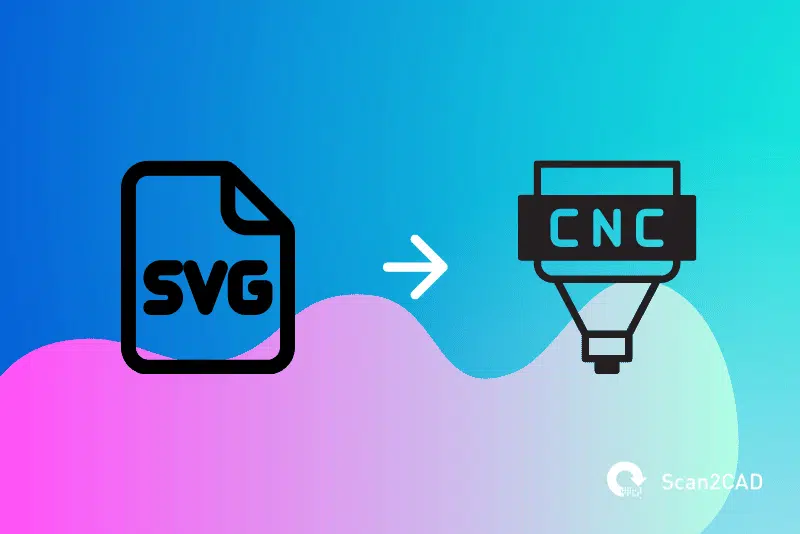
SVG files differ to JPG and PNG images because SVG is a vector file format, in fact SVG is an acronym of ‘Scalable Vector Graphics’. If you’re unsure of the difference between raster and vector file formats you may find this article handy: Explained: Raster versus Vector.
SVG to G-code conversions are not commonly required because many modern CNC applications will support SVG files, in addition to G-code files.
Unlike converting raster images to vector, if you wish to have your SVG in G-code format, you need to perform a vector-to-vector conversion. This means the software will convert the vector graphics in the SVG file to G-code instructions for your CNC machine.
A common challenge when converting an image to g-code is the original image’s quality. If the image quality is poor then you will need to work with Scan2CAD’s image cleaning tools to clean the image before converting. Luckily, you do not have this problem when converting SVG files to G-code. In most cases, you can simply open the SVG file in the converter and immediately export the file to G-code without any editing required.
How Image to G-code conversion works
All you’ve got to do is load your image in to Scan2CAD and click on one of the vectorization options. Then, just a few seconds later, you’ll have converted your raster image to a vector. You can then choose to save your new image in a G-Code format. Of the popular CNC formats, Scan2CAD supports .NC, .CNC and .TAP.
Now you can convert any JPG—or other raster file type—to one of these three G-Code file types. Scan2CAD’s CNC Export option gives users a selection of options:
- G-Code Bezier Options: cubic splines, arcs or polylines
- Arc and Circle Rotation: clockwise or anti-clockwise
- Z Settings: Z offset, Z max for passes, Z limit per pass and Z retract per pass
- Scale Settings: setting the required scale, e.g., inches or millimeters.
Top tips for converting images to G-Code
What not to convert
To get the best possible output, you should only look to convert high-quality rasters. Otherwise, you’ll run into issues when converting. For example, if your image is low-quality, Scan2CAD will struggle to detect the lines and curves present. Fortunately, we’ve got some top tips to help you pick the right image…
- Only pick images with high resolution. If it’s pixelated, you should look for an alternative.
- Try for a better raster file format. JPGs aren’t the best file format—you might look towards using a TIFF instead, taking advantage of its lossless compression.
- Less is more. Try to use images with as few colors as possible. For CNC in particular, 2-bit color is a necessity.
- Clean, clean, clean. Avoid images that have blurred areas, shadows or any overlap—it will only cause issues during vectorization.
- Avoid compound curves. CNC machines aren’t big fans of curves (splines, ellipses), and instead prefer polylines which only include line and arc segments.
You can see more common problems associated with raster images in the image below…
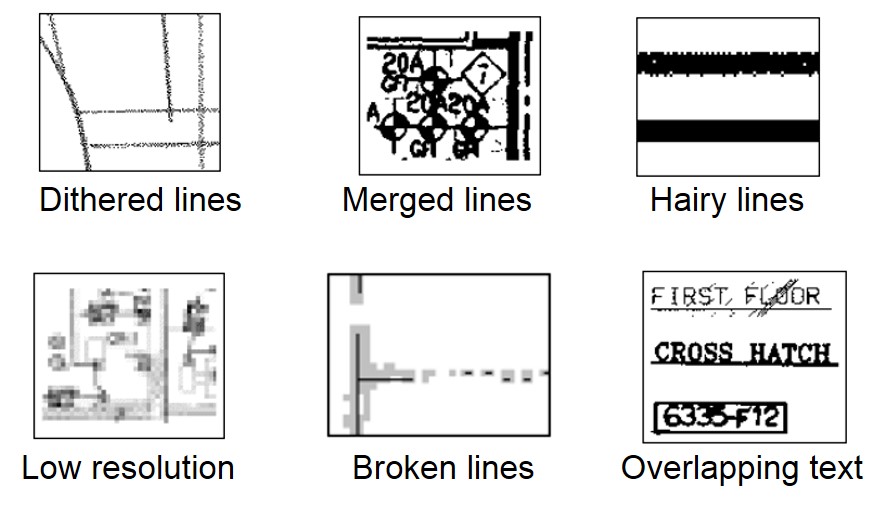
Pre-conversion tips
It’s worth noting that sometimes, even after following the tips highlighted above, there’s no avoiding images that are somewhat flawed. Fortunately, Scan2CAD doesn’t just support you through vectorization—it also comes with market-leading tools that enable you to clean up your image before and after conversion. Here are a few examples of top raster effects…
- Thresholding is key. By using Scan2CAD’s thresholding tool, you can reduce the colors in your image to just black and white, making it easier for the software to detect the entities in your raster. You can choose between simple and adaptive—the latter of which enables you to define the point at which pixels are classed as “black” or “white”.
- Remove speckles and holes. You can easily remove stray pixels with the despeckle tool which allows you to erase pixels that are larger than a certain amount. Just as easily as you can get rid of speckles, you can also fill in any holes to make solid objects.
- Thicken lines. If you’re looking to convert JPG to G-Code, you need an image without gaps or broken lines. The thicken lines tool makes this a problem of the past. Be sure to look over your image carefully, however: you don’t want to accidentally join lines that are meant to be separate.
- Smooth image. If your image has too many “hairs” around the edges, you can use the smooth tool to—yes, you guessed it—smooth out the edges. This will stop the software from drawing vectors around these hairs.
Post-conversion tips
The last thing you want is to take your G-Code to your CNC machine only to find that you’ve missed a few issues—this could lead to you wasting time and resources on a ruined output. As such, it’s incredibly important that you check your vector closely before you save it as G-Code and send it to your control software. Here are a few post-conversion tips:
- You should check that your vector output only contains single line cut paths and that these lines are all connected—one coherent cut path is needed. This is particularly important around the corners and curves of your image.
- You should remove as many node counts and intersections as possible.
- And you should consider converting any broken entities (like arcs or Beziers) to polylines.
And that’s all there is to it! Now you’ve successfully managed to convert JPG to G-Code, the possibilities are practically endless—you’ll be able to start a multitude of CNC projects. Got a logo you need to mill? Vectorize your logo quickly and efficiently with Scan2CAD!
Top resources for machinists
Whether you’re a professional or hobbyist machinist, there’s always something new to learn or enjoy in the realm of CNC. Scan2CAD loves to help, which is why we’ve compiled all of our top resources…
1. Software and hardware
If you’re not sure what control software to use, or you’re in the market for a new CNC kit—you’ve come to the right place. Get all the best tips and tricks for CNC software and hardware in Scan2CAD’s CNC-related articles:
- Which CNC control software should I use?
- CNC machines compared
- The best CNC kits for beginners
- Build your own CNC machine
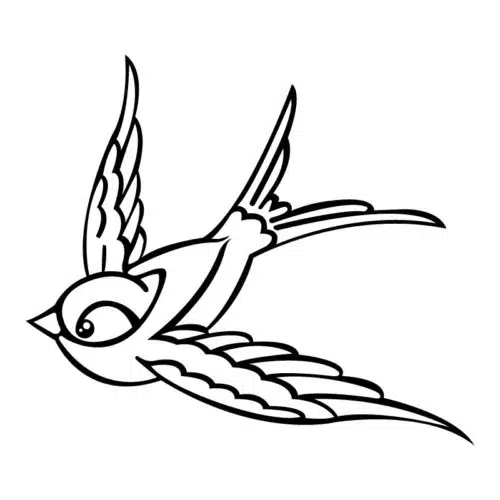 2. Free DXFs
2. Free DXFs
Sometimes we just want to get straight out there and start a new CNC project. If you’d rather skip the fuss of finding the perfect raster image to convert to vector and then G-Code, why not use ready-to-cut DXFs? Simply use one of these 13 sites with free DXFs and export them directly to G-Code using Scan2CAD. Or, you can receive free DXF packs from Scan2CAD when you sign up using your email.
3. Scan2CAD
If you want to convert JPG to G-Code or any design for CNC, Scan2CAD should be your first port of call. A professional, market-leading converter, Scan2CAD comes with a range of top tools that enable you to convert from a number of file types to vector or G-Code file types. Got raster text in your image? With Smart OCR, you can train the software to recognize even handwritten text! And with features like batch conversion – available with Scan2CAD’s Python API – you can convert hundreds of files in no time at all.
With no obligations or limitations, you can enjoy the full range of Scan2CAD features with our free, 14-day trial. Simply click on the link below to download now.

